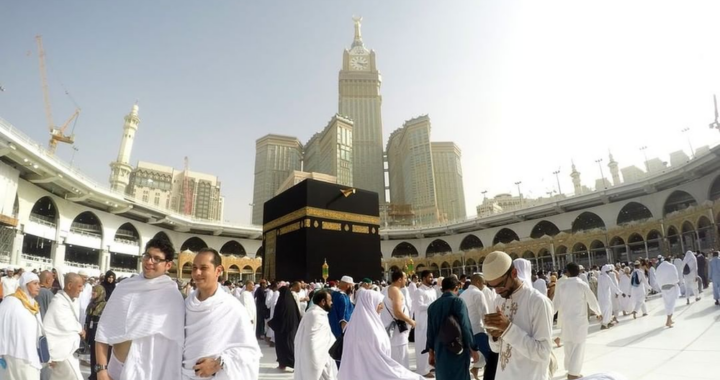Cultural Significance of Traditional Clothing
-
Table of Contents
Celebrating heritage through the threads of tradition.
Traditional clothing holds immense cultural significance in societies around the world. It serves as a powerful symbol of identity, heritage, and values, reflecting the rich history and diverse traditions of different communities. These garments often carry deep-rooted meanings, representing social status, religious beliefs, and even regional affiliations. Traditional clothing not only preserves cultural heritage but also plays a vital role in celebrations, ceremonies, and daily life, fostering a sense of belonging and pride among individuals and communities.
The Evolution of Traditional Clothing: A Journey Through Time
The Evolution of Traditional Clothing: A Journey Through Time
Traditional clothing holds a significant place in the cultural heritage of societies around the world. It is a reflection of history, identity, and values, and has evolved over time to adapt to changing social, economic, and environmental conditions. This article takes you on a journey through the evolution of traditional clothing, exploring how it has shaped and been shaped by different cultures.
In ancient times, traditional clothing served practical purposes, such as protection from the elements and camouflage during hunting and gathering activities. As societies began to settle and develop agriculture, clothing became more sophisticated, with different materials and designs reflecting the local environment and available resources. For example, in colder regions, animal skins and furs were used to create warm and durable garments, while in warmer climates, lightweight fabrics like cotton and silk were preferred.
As civilizations advanced, traditional clothing took on additional roles beyond mere functionality. It became a symbol of social status, with elaborate designs and intricate patterns reserved for the elite. In many cultures, traditional clothing also became a means of expressing religious beliefs and cultural values. For instance, in India, the sari is not only a beautiful garment but also a representation of femininity, grace, and modesty.
With the advent of globalization and the spread of Western fashion, traditional clothing faced challenges in maintaining its relevance. However, many cultures have managed to preserve and even revive their traditional attire, recognizing its cultural significance and the need to pass it on to future generations. This resurgence has been fueled by a growing interest in cultural heritage and a desire to reclaim and celebrate one’s roots.
In recent years, traditional clothing has also gained recognition on the global stage, with designers and fashion houses incorporating elements of traditional attire into their collections. This fusion of traditional and contemporary styles has not only brought traditional clothing into the mainstream but has also created new opportunities for artisans and craftsmen to showcase their skills and preserve their cultural heritage.
Moreover, traditional clothing has become a source of inspiration for fashion designers seeking to create unique and culturally diverse collections. By incorporating traditional motifs, fabrics, and techniques into their designs, these designers pay homage to the rich history and craftsmanship of traditional clothing while giving it a modern twist.
The evolution of traditional clothing is not just a journey through time but also a reflection of the resilience and adaptability of cultures. It is a testament to the enduring power of tradition and the ability of societies to embrace change while staying true to their roots. Traditional clothing continues to be a source of pride and identity for communities around the world, connecting generations and bridging the gap between the past and the present.
In conclusion, the evolution of traditional clothing is a fascinating journey that showcases the cultural significance and resilience of different societies. From its humble beginnings as a practical garment, traditional clothing has evolved to become a symbol of identity, social status, and cultural heritage. Despite the challenges posed by globalization, traditional clothing continues to thrive, with a renewed appreciation for its beauty and craftsmanship. By embracing tradition while embracing change, societies have ensured that traditional clothing remains an integral part of their cultural fabric.
Traditional Clothing: A Reflection of Cultural Identity and Heritage
Traditional Clothing: A Reflection of Cultural Identity and Heritage
Traditional clothing holds immense cultural significance, serving as a powerful reflection of a community’s identity and heritage. Across the globe, different cultures have developed unique styles of clothing that not only showcase their artistic prowess but also embody their values, beliefs, and history. From the intricate patterns of Indian sarees to the vibrant colors of African dashikis, traditional clothing is a testament to the rich tapestry of human diversity.
One of the primary functions of traditional clothing is to preserve and celebrate cultural heritage. Through the generations, communities have passed down their traditional clothing styles, ensuring that their customs and traditions remain alive. These garments often incorporate symbols and motifs that hold deep meaning within the culture, acting as a visual representation of their history and values. For example, the tartan patterns of Scottish kilts are not merely decorative; they signify clan affiliations and familial ties, connecting individuals to their ancestral roots.
Moreover, traditional clothing plays a crucial role in fostering a sense of belonging and unity within a community. When individuals wear their traditional attire, they are not only expressing their personal identity but also affirming their membership in a larger cultural group. This shared experience creates a sense of solidarity and pride, strengthening social bonds and promoting cultural cohesion. In this way, traditional clothing becomes a powerful tool for cultural preservation and community building.
Traditional clothing also serves as a means of communication, allowing individuals to convey messages and express their social status. In many societies, specific garments are reserved for ceremonial occasions or denote a person’s occupation or social standing. For instance, in Japan, the kimono is a symbol of elegance and refinement, worn during formal events such as weddings and tea ceremonies. Similarly, the intricate beadwork and embroidery of Native American regalia signify the wearer’s spiritual connection and honor their tribal traditions.
Furthermore, traditional clothing often reflects the environmental conditions and practical needs of a particular culture. In regions with extreme climates, such as the Arctic or the Sahara Desert, traditional garments are designed to provide protection and comfort. The Inuit people of the Arctic, for example, wear parkas made from animal skins to insulate themselves from the harsh cold, while Bedouin tribes in the desert wear loose, flowing robes to shield themselves from the scorching sun. These garments not only serve a functional purpose but also embody the ingenuity and adaptability of these cultures.
In recent years, traditional clothing has gained global recognition and appreciation for its artistic and cultural value. Fashion designers and enthusiasts from around the world have embraced traditional garments, incorporating elements of these styles into contemporary fashion. This fusion of traditional and modern aesthetics not only breathes new life into ancient traditions but also promotes cross-cultural understanding and appreciation.
In conclusion, traditional clothing is far more than just fabric and thread; it is a powerful symbol of cultural identity and heritage. Through its intricate designs, symbolic motifs, and practical adaptations, traditional clothing preserves and celebrates the customs and traditions of diverse communities. By wearing these garments, individuals not only express their personal identity but also foster a sense of belonging and unity within their cultural group. As traditional clothing continues to evolve and inspire, it serves as a bridge between the past and the present, connecting us to our roots while embracing the beauty of cultural diversity.
Traditional Clothing: Preserving and Celebrating Cultural Traditions
Traditional clothing holds immense cultural significance and plays a vital role in preserving and celebrating cultural traditions. It serves as a visual representation of a community’s history, values, and identity. From the intricate designs to the choice of fabrics, every aspect of traditional clothing tells a story and reflects the unique heritage of a particular culture.
One of the primary functions of traditional clothing is to preserve cultural traditions. It serves as a link to the past, connecting present generations with their ancestors. By wearing traditional garments, individuals pay homage to their roots and keep their cultural heritage alive. This act of preservation is crucial in a rapidly changing world, where globalization and modernization often threaten to erode traditional practices.
Moreover, traditional clothing acts as a powerful symbol of identity. It distinguishes one community from another and fosters a sense of belonging and pride. When individuals wear their traditional attire, they not only express their cultural identity but also assert their place in society. This sense of belonging strengthens social cohesion and promotes a sense of unity among community members.
Traditional clothing also plays a significant role in cultural celebrations and ceremonies. Festivals and special occasions provide an opportunity for communities to showcase their unique traditions and customs. During these events, individuals don their traditional attire, which adds color, vibrancy, and a sense of grandeur to the festivities. Traditional clothing becomes a visual spectacle, captivating onlookers and immersing them in the rich cultural heritage of a community.
The designs and motifs found in traditional clothing often carry deep symbolic meanings. They can represent various aspects of a community’s history, spirituality, or natural surroundings. For example, in many indigenous cultures, the patterns on traditional garments depict animals, plants, or celestial bodies, symbolizing the connection between humans and nature. These symbols serve as a reminder of the community’s relationship with the environment and their responsibility to protect it.
Furthermore, traditional clothing is not just a static representation of the past; it evolves and adapts to changing times. While the core elements of traditional attire remain intact, communities often incorporate modern influences to keep their clothing relevant and appealing to younger generations. This fusion of tradition and modernity ensures that traditional clothing continues to be cherished and embraced by future generations.
In addition to its cultural significance, traditional clothing also has economic importance. Many communities rely on the production and sale of traditional garments as a source of income. By supporting local artisans and craftsmen, individuals contribute to the preservation of traditional skills and techniques. This economic aspect of traditional clothing helps sustain communities and ensures the continuation of cultural practices.
In conclusion, traditional clothing holds immense cultural significance and serves as a powerful tool for preserving and celebrating cultural traditions. It acts as a visual representation of a community’s history, values, and identity. By wearing traditional attire, individuals pay homage to their roots, assert their cultural identity, and foster a sense of belonging. Traditional clothing also plays a vital role in cultural celebrations and ceremonies, adding color and vibrancy to these events. The designs and motifs found in traditional garments carry deep symbolic meanings, connecting communities with their history and spirituality. Moreover, traditional clothing has economic importance, supporting local artisans and craftsmen and sustaining communities. In a world that is constantly changing, traditional clothing stands as a testament to the resilience and richness of cultural heritage.Traditional clothing holds immense cultural significance as it reflects the history, values, and identity of a particular community or society. It serves as a visual representation of cultural heritage, customs, and traditions, allowing individuals to connect with their roots and preserve their cultural identity. Traditional clothing also plays a vital role in various cultural celebrations, ceremonies, and festivals, serving as a symbol of unity and pride. Additionally, it serves as a means of artistic expression, showcasing unique craftsmanship, intricate designs, and vibrant colors that are often passed down through generations. Overall, traditional clothing holds great cultural significance and serves as a powerful tool in preserving and celebrating diverse cultural heritages around the world.

 Latest Updates on NSE Unlisted Share Price: What You Need to Know
Latest Updates on NSE Unlisted Share Price: What You Need to Know  Best Places for Currency Exchange in Kolkata: A Complete Guide
Best Places for Currency Exchange in Kolkata: A Complete Guide  7000 Puffs Crystal Prime: Your Go-To Manual for the Best Vaping Experience
7000 Puffs Crystal Prime: Your Go-To Manual for the Best Vaping Experience  Cat In The Chrysalis Spoiler – Synopsis, Character Development, Themes And Much More
Cat In The Chrysalis Spoiler – Synopsis, Character Development, Themes And Much More  Innovative Pain Relief Techniques: What’s New?
Innovative Pain Relief Techniques: What’s New?  6 Tips For Choosing Umrah Packages From UK
6 Tips For Choosing Umrah Packages From UK  Exploring London’s Best Butcher Shops
Exploring London’s Best Butcher Shops  Enhance Your Shop Appeal with Sydney’s Best Carpentry Services
Enhance Your Shop Appeal with Sydney’s Best Carpentry Services  A Detailed Look at the Features of the LEGO Technic Mars Crew Exploration Rover
A Detailed Look at the Features of the LEGO Technic Mars Crew Exploration Rover